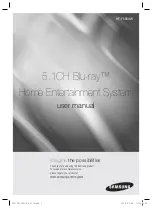
8: Setup Mode: Channel Configuration
UDS1100 User Guide
42
I/F (Interface) Mode
The Interface (I/F) Mode is a bit-coded byte entered in hexadecimal notation. The default
setting is
4C
.
Figure 8-2. Interface Mode
I/F Mode (4C) ? _
The following table displays available I/F Mode options:
Note:
All bit positions in the table that are blank represent “don’t care” bits for
that particular option, which can be set to either a 0 or 1 value.
Table 8-1. Interface Mode Options
I/F Mode Option
7 6 5 4 3 2 1 0
RS-232C
(1)
0 0
RS-422/485 4-wire
0 1
RS-485 2-wire
1 1
7 Bit
1 0
8 Bit
1 1
No Parity
0 0
Even Parity
1 1
Odd Parity
0 1
1 stop bit
0 1
2 stop bits
(1)
1 1
(1)
2 stop bits are implemented by the software. This might influence performance.
The following table demonstrates how to build some common Interface Mode settings:
Table 8-2. Common Interface Mode Settings
Common I/F Mode Setting
Binary
Hex
RS-232C, 8-bit, No Parity, 1 stop bit
0100 1100
4C
RS-232C, 7-bit, Even Parity, 1 stop bit
0111 1000
78
RS-485 2-wire, 8-bit, No Parity, 1 stop bit
0100 1111
4F
RS-422, 8-bit, Odd Parity, 1 stop bit
0101 1101
5D
Flow
Flow control sets the local handshaking method for stopping serial input/output. The
default setting is
00
.
Flow (00) ? _
Use the following table to select flow control options:
















































